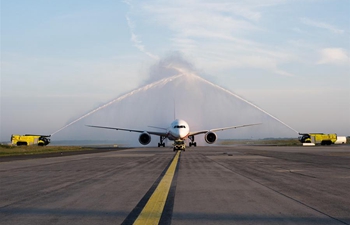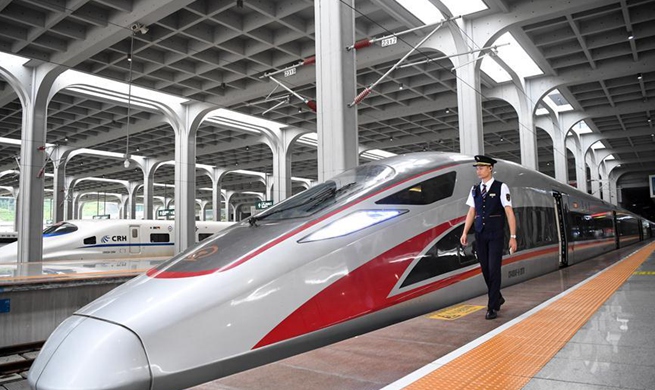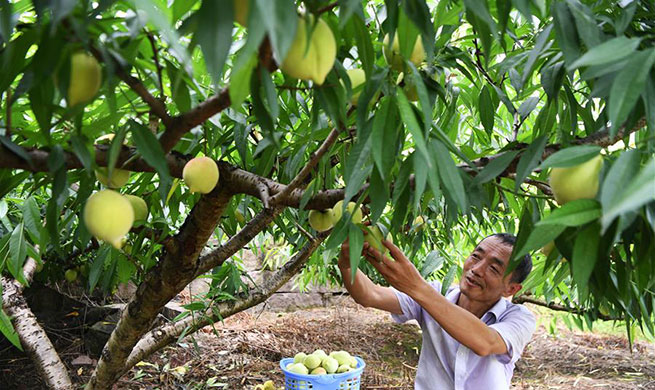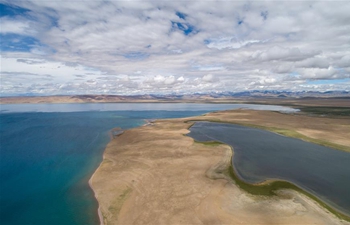HOHHOT, July 11 (Xinhua) -- Every morning at around 9 o'clock, 36-year-old Enkbold leaves his house in Zamyn-Uud, a border city in Mongolia, and heads for his store at a trade zone in Erenhot of north China's Inner Mongolia Autonomous Region.
His store, opened this April, sells Mongolian products, with coffee and honey the most popular among Chinese customers. "I have to replenish the stocks every two to three days," he said.
Enkbold now makes around 10,000 yuan (1,452 U.S. dollars) a month, much higher than his office work at Ulan Bator, the capital of Mongolia, a year ago. "I'm trying to increase the variety of goods and hope to find a Chinese partner to bring more products from Mongolia to China," he said.
China and Mongolia share a border stretching 4,710 km. Trade volume through the crossing between Erenhot and Zamyn-Uud accounts for more than 70 percent of cross-border trade between the two countries.
In recent years, the two countries have rolled out a series of preferential policies to enhance bilateral trade.
Construction of the trade zone began in 2014, and trade exchanges have been significantly facilitated since it was officially put into operation in March 2017.
Trade volume in the zone was about 190 million yuan last year, according to Mengk, deputy director of the bureau of commerce in Erenhot. And the figure has hit almost 130 million yuan in the first half of this year.
In 2015, China and Mongolia also agreed to dedicate 9 square km of land in Erenhot and Zamyn-Uud to a joint economic zone, which is expected to further bolster trade in the China-Mongolia-Russia economic corridor. The inter-government agreement of the economic zone was signed in June and follow-up work is being progressed.
"We plan to complete the construction of the 3-square km core area by 2020," said Mengk.
Data from the General Administration of Customs in China showed that bilateral trade between China and Mongolia rose 24.7 percent year on year to almost 8 billion U.S. dollars in 2018. Trade volume in the first five months this year also registered a 7.1-percent increase to 3.35 billion dollars.
Mongolia has stepped up trade connection with more areas in China in recent years. In March, a direct air route was opened between Ulan Bator and China's southern coastal city of Guangzhou, which is expected to create more opportunities in bilateral collaboration of education, trade and tourism.
The third China-Mongolia Expo will also be held this September. The expo plays a positive role in optimizing the structure of bilateral trade and promote the exports of high value-added and non-mineral products from Mongolia, according to Chultem Ulaan, Mongolian minister of food, agriculture and light industry.
Enkbold is more than excited to join the expo. "I want to have a deeper understanding of the Chinese market and this is also a great opportunity for me to develop more clients," he said.

















